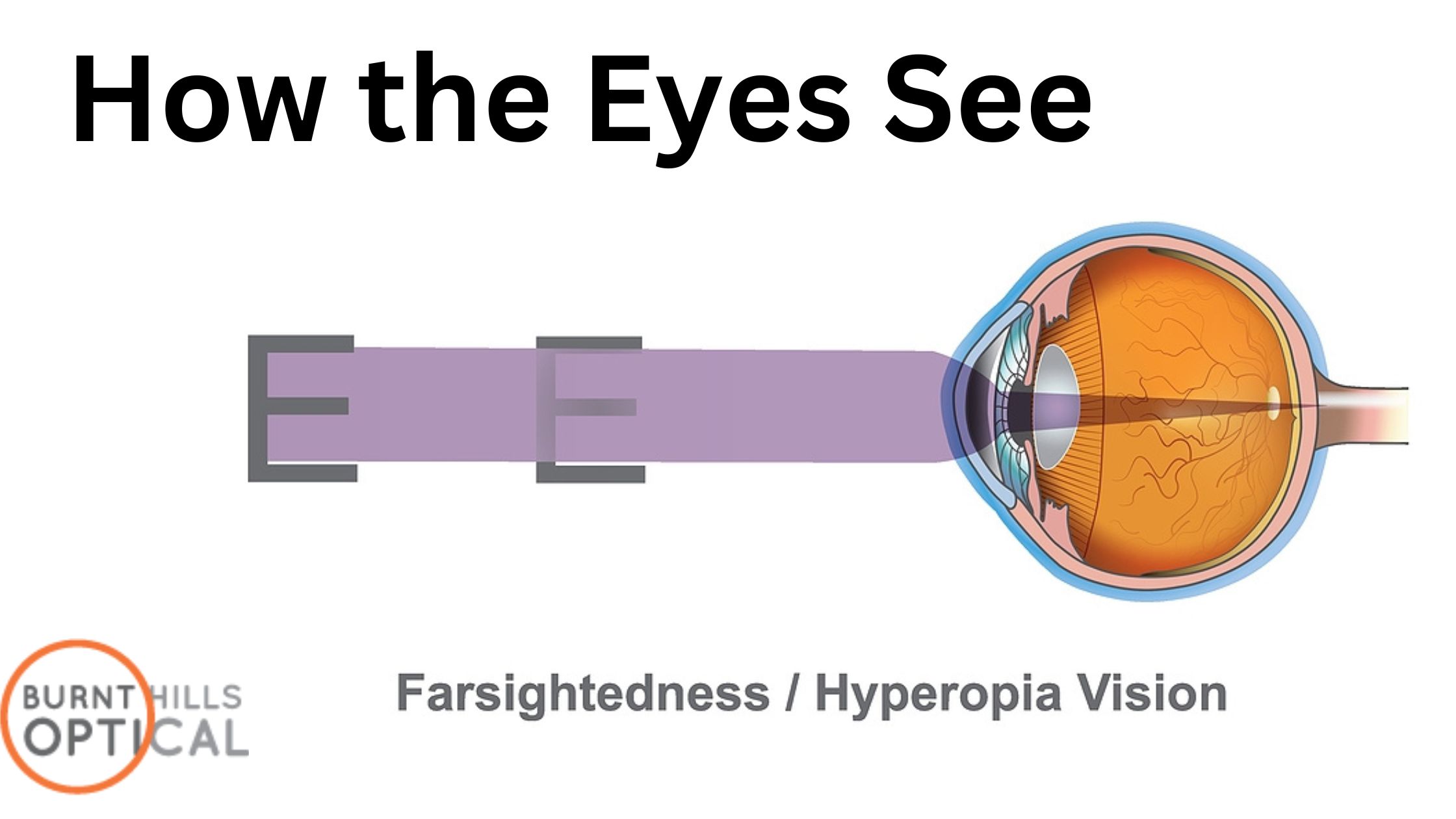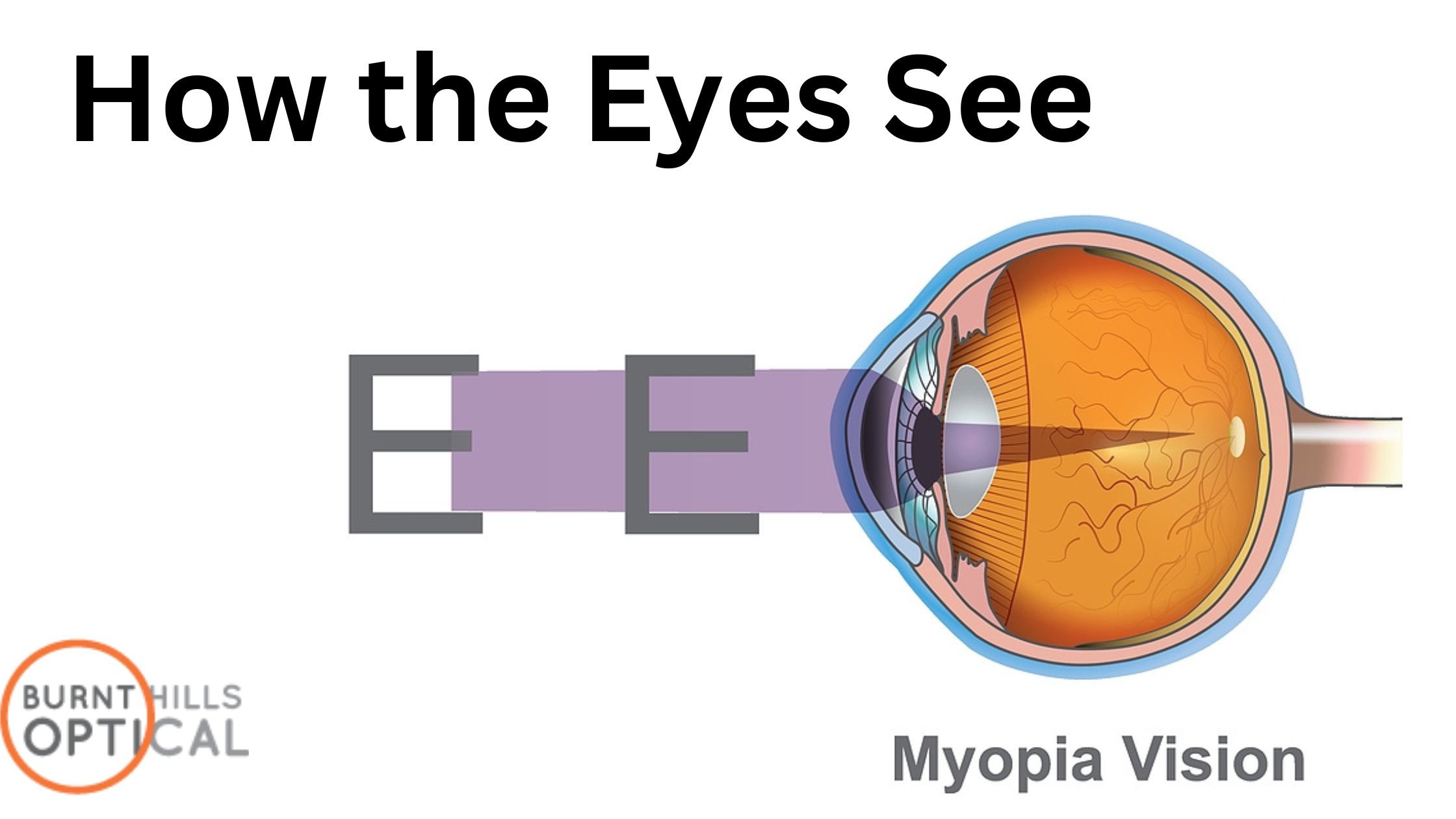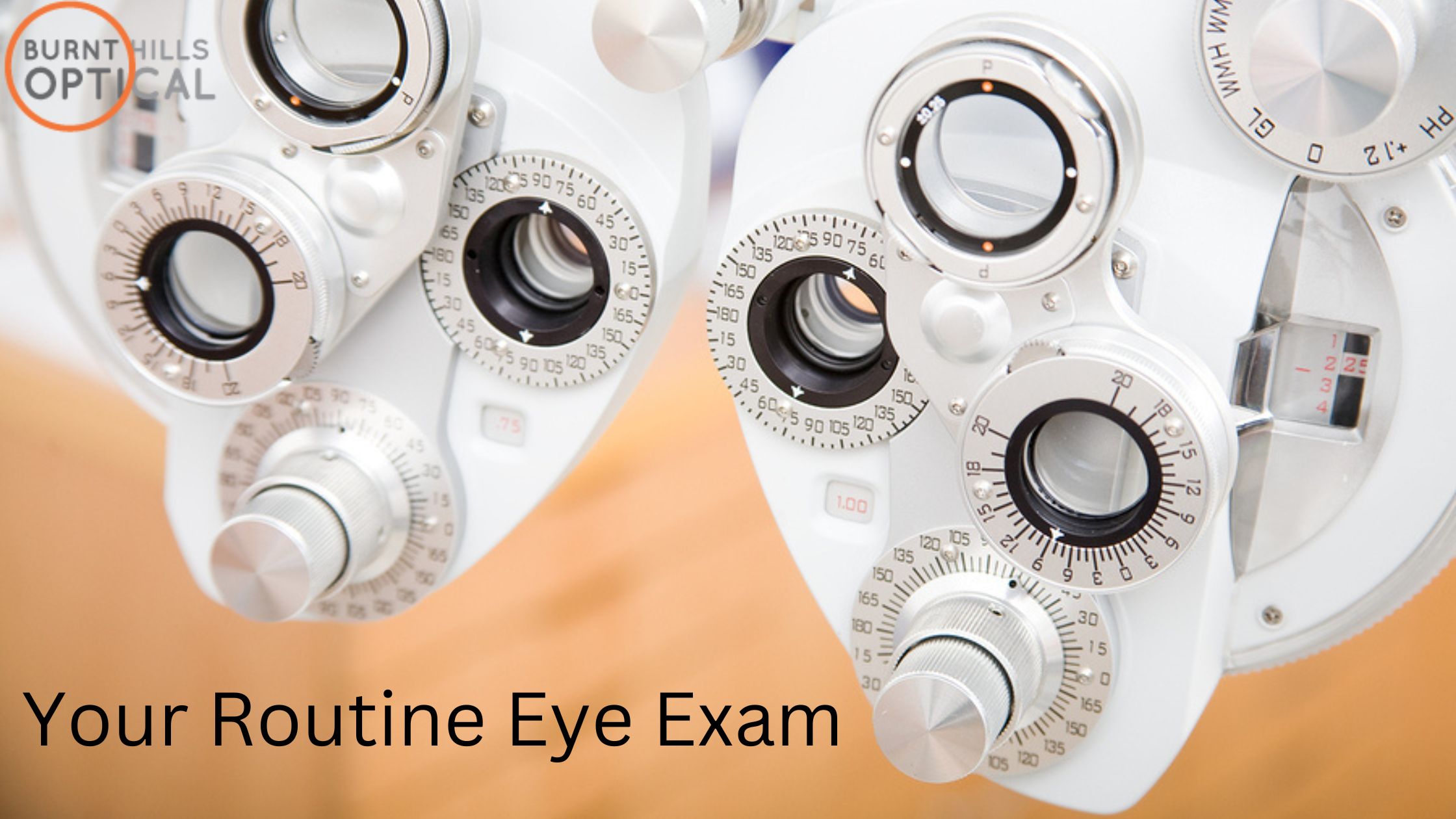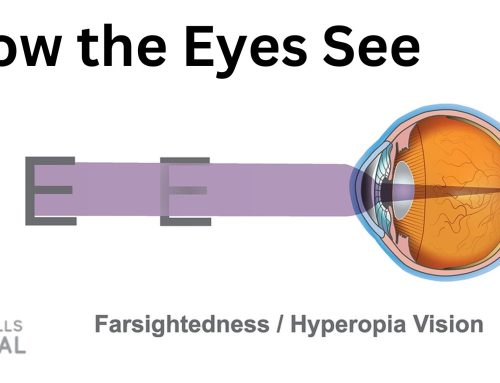How the Eyes See: Part I
We see the world around us because of the way our eyes bend (refract) light. Refractive errors are optical imperfections that prevent the eye from properly focusing light, causing blurred vision. The primary refractive errors are nearsightedness, farsightedness and astigmatism.
The process of vision begins when light rays that reflect off objects and travel through the eye’s optical system are refracted and focused into a point of sharp focus. For good vision, this focus point must be on the retina. The retina is the tissue that lines the inside of the back of the eye, where light-sensitive cells capture images in much the same way that film in a camera does when exposed to light. These images then are transmitted through the eye’s optic nerve to the brain for interpretation.
Nearsightedness, also known as myopia, develops in eyes that focus images in front of the retina instead of on the retina, which results in blurred vision. This occurs when the eyeball becomes too long and prevents incoming light from focusing directly on the retina. It may also be caused by an abnormal shape of the cornea or lens. The exact cause of nearsightedness is unknown, but two factors which may be primarily responsible for its development are heredity and visual stress.
Some of the signs and symptoms of nearsightedness include: headaches, eyestrain, squinting and difficulty seeing distant objects, such as highway signs. Nearsightedness can be treated with glasses, contact lenses or with laser procedures, such as LASIK. In some cases, myopia may also be treated with a corneal-reshaping procedure, although results are usually temporary in nature.
Nearsightedness is usually detected during childhood, between the ages of 10 and 20. It is often discovered when a child complains of not being able to the chalkboard. The condition often continues to get worse, but stabilizes in the mid to late-twenties. Nearsightedness is diagnosed by a comprehensive eye examination completed by an optometrist or ophthalmologist. Using the information obtained from an eye exam along with the results of other tests of eye focusing and eye teaming, your optometrist can determine the power of lens correction needed to provide clear vision. Once testing is complete, your optometrist can discuss options for treatment.
If you have any questions about this article or any other eye care issues, you can always ask us on our Facebook page. We promise a prompt response and would be happy to help ensure the health and well-being of your vision.









